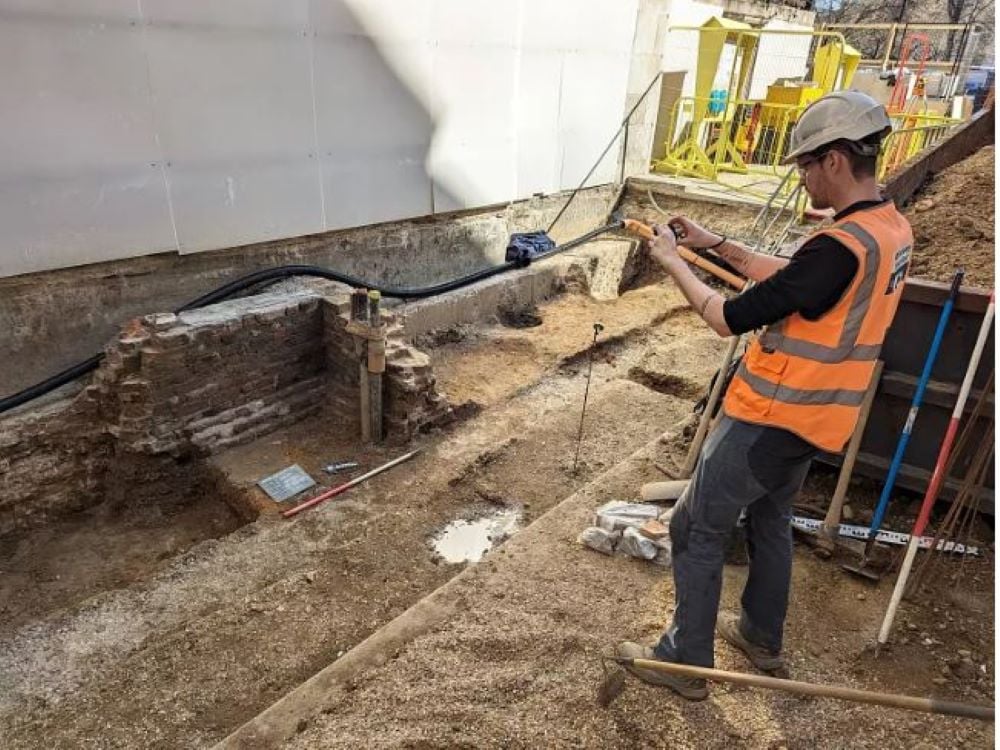

An archaeologist records a large medieval wall that has been excavated (Photo: Southeastern Archeology/UCLA)
A city buried under nationalism Gallery Archaeologists discovered the city of London by chance during restoration work. The location of the discovery suggests that the urban center of the Saxon Lundenwic region extended further west than previously thought.
The discovery happened by chance. On the occasion of the gallery's bicentenary, extensive renovation work began. The work was so extensive that an underground tunnel had to be opened, which ran under the road known as Jubilee Walk, connecting Trafalgar Square with Orange Street. At that point, an impressive archaeological discovery was made.
Underground excavations have revealed archaeological finds including a hearth dating back to the 7th or 8th century, indicating the presence of Saxon settlement in the town of Londenwick. And all this in the place where the London National Gallery is located today.

the findings
Archaeologists from UCLA have discovered a hearth, stake holes, cooking pits, pits, trenches and underground storage areas. Stephen White, who led excavations at the site, said: “The evidence unearthed suggests that the urban center at Lundenvik extended further west than we initially thought.” Stephen White, head of excavations at Jubilee Walk, said: “Announcing this discovery and linking it to archeology in the rest of London makes it even more exciting.”
Above the stratification of the Saxon levels, post-medieval walls have also been discovered, the oldest of which are believed to have been built in the 17th or 18th century. Archaeologists have discovered evidence of various stages of rebuilding of the walls over time, using different building materials, dating back to the 19th century.

London story in levels
The excavations beneath the National Gallery are the latest of many to confirm that London today is built on layers upon layers of history.
Over the past 100 years, thousands of archaeological sites have been investigated in the Greater London area, revealing more and more evidence of the city's past.
Before London
Before London, there was the Roman walled city of Londinium, founded in AD 47 and abandoned in the 5th century.
Londinium's successor city was Londenwyk, a Saxon trading center extending from the western walls of the Roman city, beginning in the 7th century.
The National Gallery is located at the western end of the settlement, and while previous excavations have uncovered Saxon material, the Jubilee Walk area is the first excavation to prove that the town center extended so far west.
200 years of the National Gallery
In 1824, the London National Gallery was established by Parliament. It houses the British collection of Western European traditions, from the thirteenth to the twentieth centuries. The collection includes works by Raphael, Rembrandt, Renoir, Bellini, Cézanne, Degas, Monet, Van Gogh, and Van Dyck.

“Hipster-friendly coffee fanatic. Subtly charming bacon advocate. Friend of animals everywhere.”





More Stories
2024 Olympics: What does the rider who crossed the Seine symbolize (video)
He is the “Hitler of our time.”
Woke Agenda: Infuriates Elon Musk, Burns Politicians, Targets the Secret Service